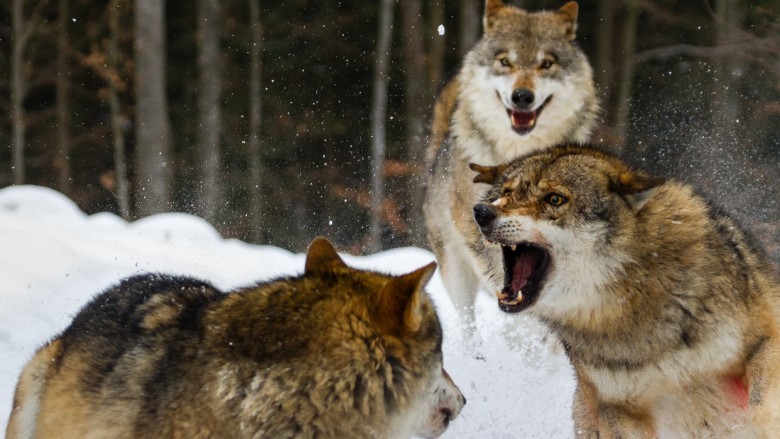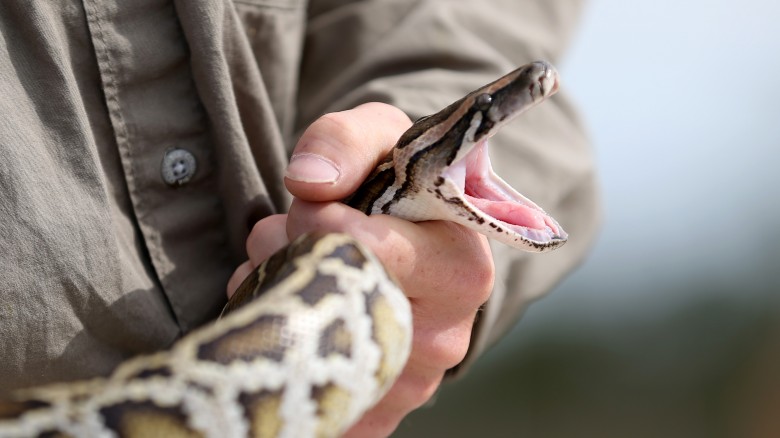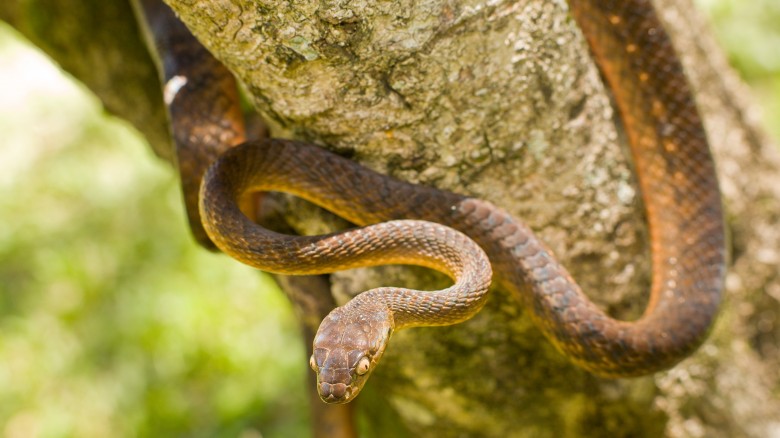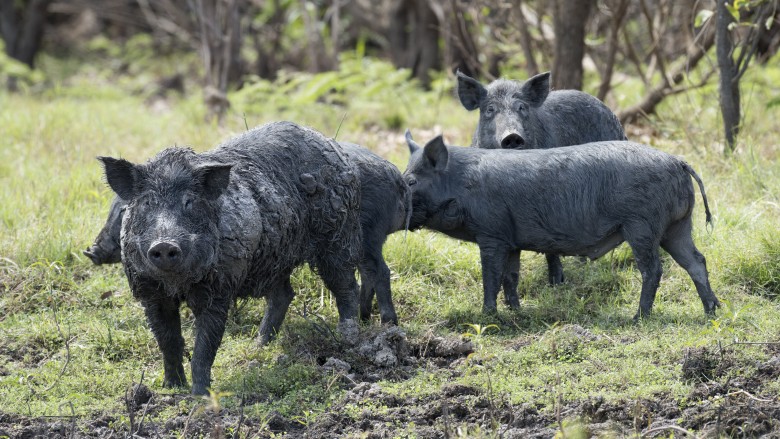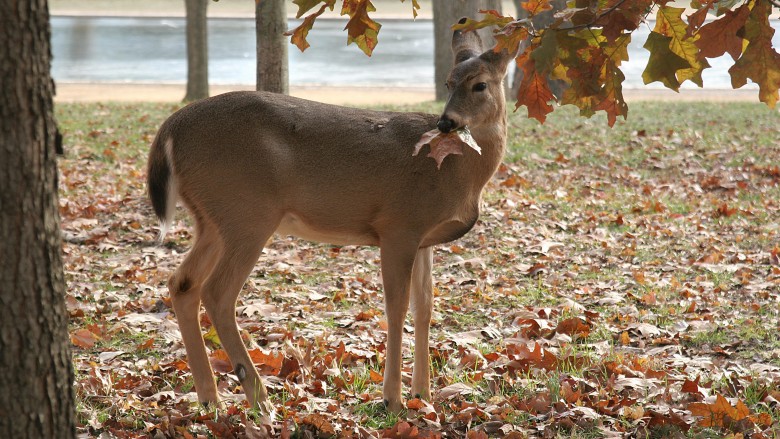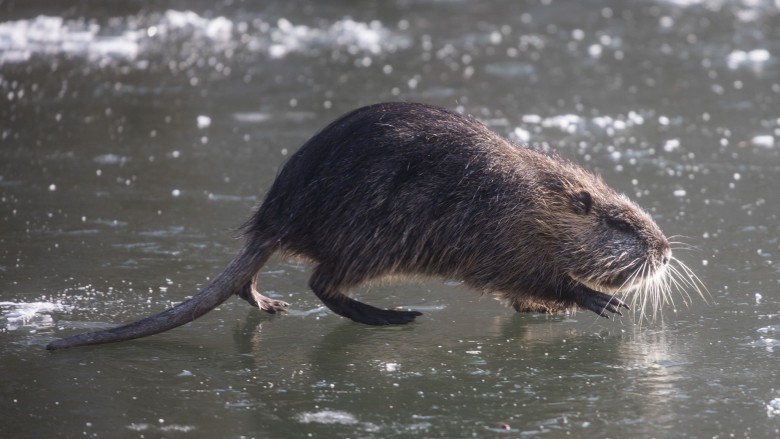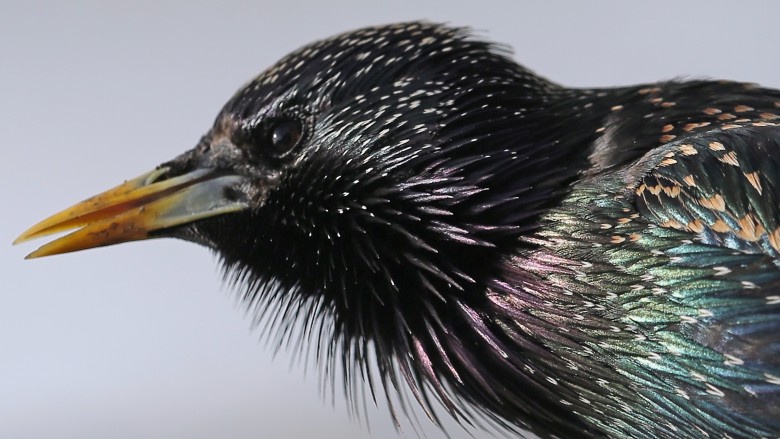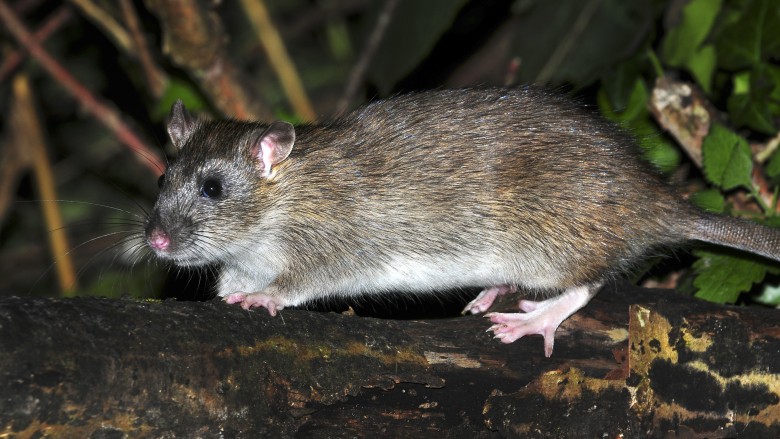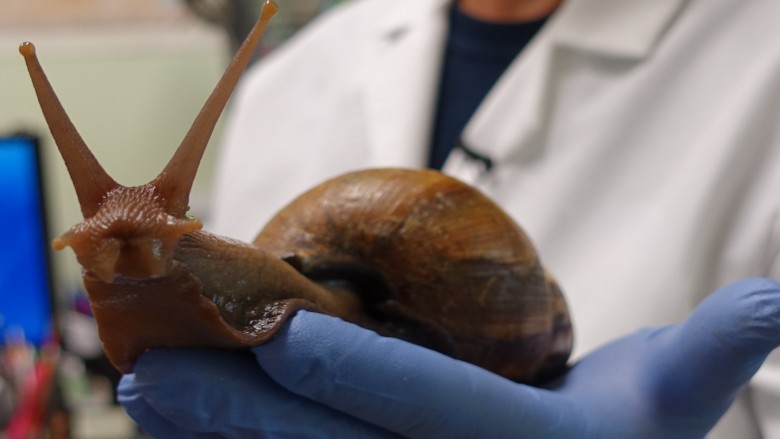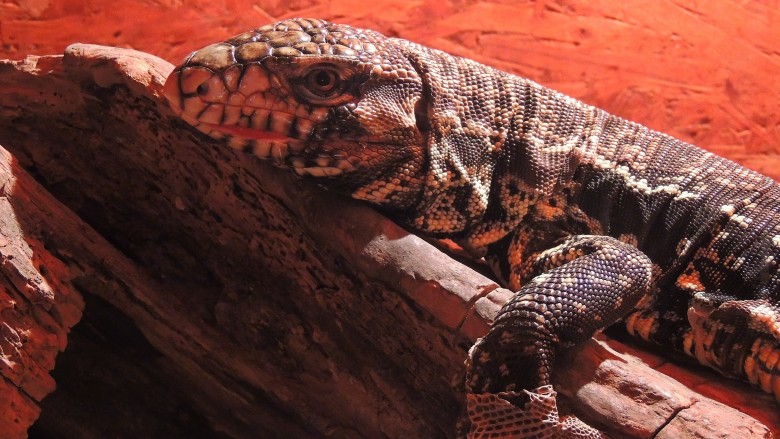Most Destructive Animals That Could Be Lurking In Your Backyard
Invasive animals aren't fun at all. Even the cutest and fuzziest of them, because they're not where they should be, tend to eat everything in sight and salt the lands behind them. Even more fun: some of these animals could be chilling in your yard right now. Animals such as:
Burmese python
The enormous Burmese python holds the distinction as being the most likely animals to spend its days in a too-small aquarium owned by a mullet named Dwayne. They can grow upwards of 18 feet long, and yes they aren't venomous, but they can grow upwards of 18 feet long. A Burmese python could swallow all three Jonas brothers and still have enough room for their pets — venom would just slow things down.
While they were first observed in the Florida wild in the 1980s, it only took two full decades for the state to swing into action, banning their importation and staging occasional "python hunts," which have so far proven utterly useless. Because of the thick underbrush, intertwined canopy, and general snake-friendliness of Florida's wild areas, detection and removal can be quite the challenge. Even calculating their population is difficult, as official estimates range from 30-300,000. Given that one snake needs to eat 200 pounds of prey over 5 years to reach its full size, 300K of the untrackable Slitherins could very well eat our fair land into total habitat destruction.
According to a 2010 study, 25 different species have been discovered inside of snakes. Only two years later, the National Academy of Sciences released a study detailing a severe drop in mammal population as well. So yeah, it's a problem. Pythons are even capable of eating alligators, an animal so famed for their unruly temperament, even hook-laden pirates didn't dare cross them. If these snakes aren't stopped, they'll continue to grow in number until there is nothing left for them to eat but pets and tourists.
Brown Tree snake
Introduced to Guam sometime in the 1950s, the Brown Tree snake quickly extirpated it, and many other islands, of their birds, turning whole forests into silent, spider-filled nightmares. What's worse: the Brown Tree snake is very much a poisonous one. While its venom isn't especially life-threatening to adults, the BTS utilizes a special "chewing" motion to work the venom into its prey, making the bite itself much more painful than it would otherwise have to be.
"More painful than it needs to be" really is the BTS's calling card. While depopulating whole islands across the Pacific is bad enough, the snake also has a habit of damaging the electrical grid. In Hawaii alone, by climbing power lines and crawling into warm transformers, they caused an average of 200 power outages a year. One study estimated that economic costs exceed $4.5 million over just a 7-year period.
While efforts to remove it from islands have shown moderate success, there are now established populations in Texas. Yep, they've gone mainland — at the rate they're going, it's just a matter of time before they start chilling with (and eating) the pigeons in Central Park. AC/DC won't feel safe in New York City ever again.
Feral pigs
Feral hogs are different from native populations of wild swine, in that a feral hog has descended from domesticated hogs that were either unintentionally (or intentionally) introduced to the wild. These piggies eat anything and everything they can get past their tusks, including frogs, voles, birds, snakes, and basically every plant. Their foraging habits inflict a huge amount of damage to the topsoil, which is especially damaging to New World plants that never faced predation by would-be bacon in the past.
Feral hogs are almost as large a threat to the American farmer as banks. A small family group of feral pigs can uproot a large number of acreage in an incredibly short period of time, and no amount of fencing can stop a determined group of pigs from getting where they want to. They'll prey on livestock and wild turkeys, and they'll even break into domestic pig pens and infect whole herds with invasive pathogens. Those they don't eat will escape into the wild, conscripting more hoofsoldiers into the Swine Army, and the cycle begins anew.
It's gotten to the point where, in places like Texas, you can stone-cold murder an unlimited number of feral pigs, and nobody will really care. Go as hog wild as you possibly can, because they breed a lot — Texas A&M concludes that killing two-thirds of their population will only keep their numbers stable. Clearly, more drastic measures are called for — preferably drone-mounted, but we're no rocket scientists.
Domestic cats
If you were stalked by a bloodthirsty serial killer named Mister Whiskery Fuzzlebottoms, you'd probably assume you were the punchline in a Wayans Brothers movie. However, "stalked by cats" is the daily reality for most suburban wildlife, and the problem is only getting worse.
Cats — both domestic and feral — have caused the outright extinction of 33 species, and they're adding more to that list every year. Also, these fuzzy jerks kill for fun as readily as they would for food, multiplying their lethality. Their claws enable them to scale trees, walls, and fences — they can dig, and some might be clever enough to learn how to operate simple levers. Or at least, judge harshly while others do.
While they can help reduce pest rodent populations in urban and agricultural settings, when left unchecked, they'll grow in population until there's nothing left for them to hunt. While feeding strays might seem like an act of kindness, it only facilitates the problem. A multi-pronged approach utilizing "Trap, Neuter, Release" programs and adoption shelters can go a long way towards reducing the influx of new stray cats, but even still: cat owners, please don't let your pets go outside. If not for the birds, then for the dozens of feline diseases fermenting in feral strays. Toxoplasmosis gondii is real, it is contagious and, medically speaking, it could put brain parasites "all up inside" a baby. That'll make a dog person out of anyone.
White-tailed deer
In addition to being both both an excellent source for jerky meat and the star of probably the biggest Disney tear-jerker ever, White-tailed deer are also the most majestic garden pest in North America. As a prey species, they evolved to reproduce in sufficiently large numbers to sate America's big cats, and other top-tier predators. Now that we've killed off many of the big cats and turned a good chunk of the wolves into fursuits, there's no ecological pressure stopping WTD from gnawing the forests bare. Except for the occasional Burmese python, the only thing keeping the deer in check are hunters, and people who text while driving at night.
Make no mistake — these deer are wreaking havoc on American forests. They devour new seedlings, strip shrubs bare of leaves, then strip the bark off the shrubs in the winter. The only plants that can survive deer overabundance are mature trees and other invasive species the deer don't eat, like Garlic Mustard. All told, some 98 endangered botanical species are threatened by deer abundance, including wildflowers like white trillium and delicious snacks like blueberries. In addition to wild spaces, deer also love to feast on farm plots, often seeding agricultural areas with difficult-to-remove invasive weeds like Multiflora Rose.
In addition to carrying the ticks that cause Lyme disease, deer also present one of the biggest threats to drivers that can't be avoided with a hands-free earpiece. WTD in the road cause 29,000 injuries yearly, over $1 billion in insurance claims, and 130 lives lost, all thanks to that antlered venison-golem Walt built his empire on. We're sorry for demonizing you, Faceless Hunter Who Took Down Bambi's Mom: you were the real MVP all along.
Nutria
Not to be confused with the capybara, probably the most chill animal on the planet, the nutria is basically a tailless beaver that's so angry, it can't even build bridges — it just destroys things. An aquatic mammal, which is how scientists say "wet rat," it dines almost exclusively on the roots of wetlands plants. It also burrows into shorelines and digs for tubers, meaning it causes massive erosion in an exceptionally short period of time. And they're heeeeere: nutrias were once a non-American menace, but now you can find them on the Atlantic coast of the US rather easily. West Coast? Bank on being next.
One nutria can eat 25% of its body mass in vegetation every day. Because it only eats the roots, the majority of the plants it kills goes uneaten. It wastes 10x the volume it eats, so the plant material decomposes in place, turning a once-lovely swamp into an inhospitable mudhole that would bring even Shrek to tears.
When they aren't undermining dams, they've been known to carry both tuberculosis and intestinal flatworms, so you better hope they don't take up residence in your favorite swimming spot. Nutria will ruin a vacation faster than your parents can say "summer school." Luckily, it's edible, but only if your body knows how to digest pure hate and revenge.
European starlings
In 1890, a bunch of foolhardy Shakespeare fans gathered in Central Park and released 100 wild birds to help populate the park. The goal of this project was to ensure that every bird mentioned in his writings had a home in America. One such bird was the starling, a forager widely adapted to live anywhere from central Asia to most of continental Europe. Because the starling is so well-adapted to such a wide variety of temperatures, it has seized territory ranging from humid Mexico to the Alaskan arctic, making it one of the more populous birds on Earth.
This population comes at a steep price, as aggressive, pack-forming Starlings readily out-compete native foragers competing for insects, and they readily destroy nests built by much larger birds. Effectively, they gentrify whole areas by out-eating, and out-breeding, natives. They're also much less disturbed by human interactions — to observe this in your own neighborhood, leave a small container of french fries atop a trash can and watch the bird ballet take place.
In addition to attacking native insects, they're also a pernicious agricultural pest, attacking freshly-sown fields and befouling livestock feed with their acidic, disease-ridden droppings. In sufficient numbers, they're even capable of taking down aircraft, so if you ever go back in time and meet The Bard, smack him in the face every time he writes about a bird. He'll learn his lesson eventually.
Brown rats
Mistakenly referred to as the "Norway Rat" for much of its history, the Brown rat could rightly be called the Kingkiller rat, for its role in changing European history. This is the rat that carried the flea that spread the Black Plague. In addition to outright killing aristocrats like they were common peasants, the steep drop in worker population shifted the social power dynamic in favor of peasants so much, it eventually brought an end to the whole feudal system. That's a literal AND figurative killing, which is why the name is so fitting. Think about it, scientists. Layers.
However, the plague is but a footnote in the history of The Deadliest Rat. Being a generalist feeder, able to climb trees and small places alike, the Brown rat has depopulated entire islands of birds. They outcompete, and occasionally eat, other native rodents, devour all manner of plants, fruits, and nuts, and are perfectly at home among the humans.
Because they're so closely entwined with the history of human colonialism, the true scale of their impact cannot even be imagined. Even now, the full scale of invasive rat damage is difficult to measure, because of how pervasive it is. Efforts to remove rats from their island enclaves is costly, but successful. One test site in Alaska, lovingly nicknamed "Rat Island," helicopter-dropped so much poison, every single rat on the island was wiped out. 100 birds died in the process, but that's a slight cost in the grand scale of things.
Giant house-eating snails
Prepare yourself for the most Florida sentence ever: with police hot on his heels, an Orisha cult leader unleashed a swarm of giant house-eating snails on Miami.
Ifa Orisha is a traditional African faith often erroneously confused with Santeria — both use these seven-inch nightmare snails in rituals, but only one achieved immortality via Sublime. Some people think Florida is overrun by these snails because of the cult, but more likely, these hungry, shell-sporting land-boogers mostly smuggle into people's bags as they leave islands like Jamaica or the Dominican. Or, tourists bring the snails back on purpose, because they're kinda cool in a monster-y way. These people typically don't know what hell they hath wrought ... until they wake up to hundreds of thousands of snails chewing through Florida's prettiest ravines, that is.
So why eat houses? Well, because at 7 inches long, nothing can stop them. Plus, they're nutritious and delicious — the stucco exterior popular in many housing divisions is rich in lime, which the snails need to grow their shells. They also relish the calcium in concrete, the pair of which comprise approximately 100% of all buildings in Florida, meaning a snail looks at a housing development like Flash looks at a Hometown Buffet. Worse, they're often infected with a parasitic lungworm, which causes meningitis in humans exposed by the fecal trails covering every surface in sight. Florida Man's one weakness!
Populations can get so dense that streets become difficult to navigate, and previous infestations have not been cheap to remove — the state once spent $10 million over 10 years to end a previous accidental invasion. Since eradication efforts began in 2010, experts estimate over 157,000 of the slimy buggers have been removed, but the job's not done. Never mind your steak — if anything needs extra salt, it's Florida.
Tegu
Lizards are usually pictured indolently sunning on a rock, or perched unmoving on a branch. Either way, the word "athletic" rarely springs to mind, yet springing athleticism is exactly why the Tegu is such a threat.
Its strong legs make it an excellent burrower, it can disrupt freshwater and coastal ecosystems, and they regularly feast upon alligator, turtle, and burrowing owl eggs. It can also climb trees — bad news not just for birds, but for anyone walking underneath trees on a cold day. Being cold-blooded creatures, tegus will lose muscle control and fall out of trees the minute it hits parka weather. That would actually be kind of cute, if they didn't also lay 90 eggs in a single year.
Meanwhile, in Florida, former Burmese python owners are now importing the tegu — their new, voracious pest pet, and failing to secure their enclosures, releasing more into the wild. We aren't saying exotic pet owners deserve their stigma, but they certainly aren't helping things either.
Coywolves
When wolf populations get so low that finding mates proves to be a challenge, wolves crossbreed with coyotes to make coywolves (a better name then wolotes, for sure). This has been proven in a laboratory setting, which found that even first-generation hybrids were sexually compatible, unlike mules or other commonly known hybrids. This interbreeding has affected nearly every wolf and coyote population in North America, ranging from Canada to Mexico.
It's theorized that inbreeding with domestic dogs helped cure coywolves of their fear of humanity, as they've readily occupied suburban and urban areas, including some parks within New York City. Estimates claim as much as 10% of wolf and coyote DNA comes from recent breeding with domestic dogs, while populations closer to cities can range up to 25 percent. While they prefer to prey on rats and trash, they're capable of cooperating to take down deer.
While they aren't explicitly dangerous (yet), they will go after cats and dogs — there's at least one report of a pet attacked by a coywolf while it was on a leash. Fences do not stop them, either, as they're perfectly capable of leaping a six-foot fence when sufficiently motivated. And, for the record, "your Pomeranian" counts as sufficient motivation.
